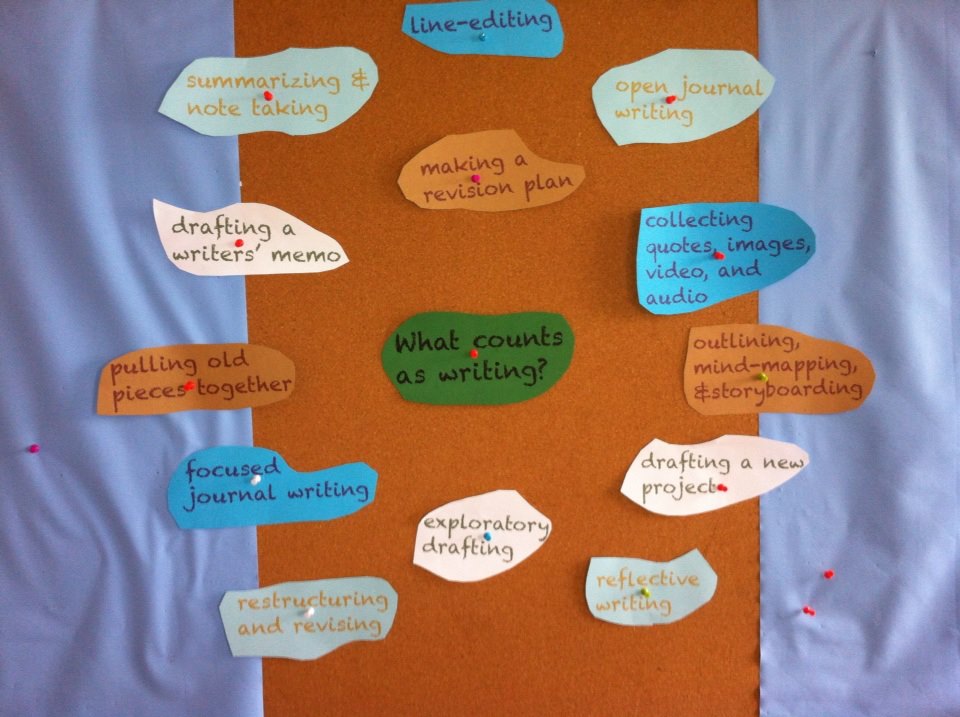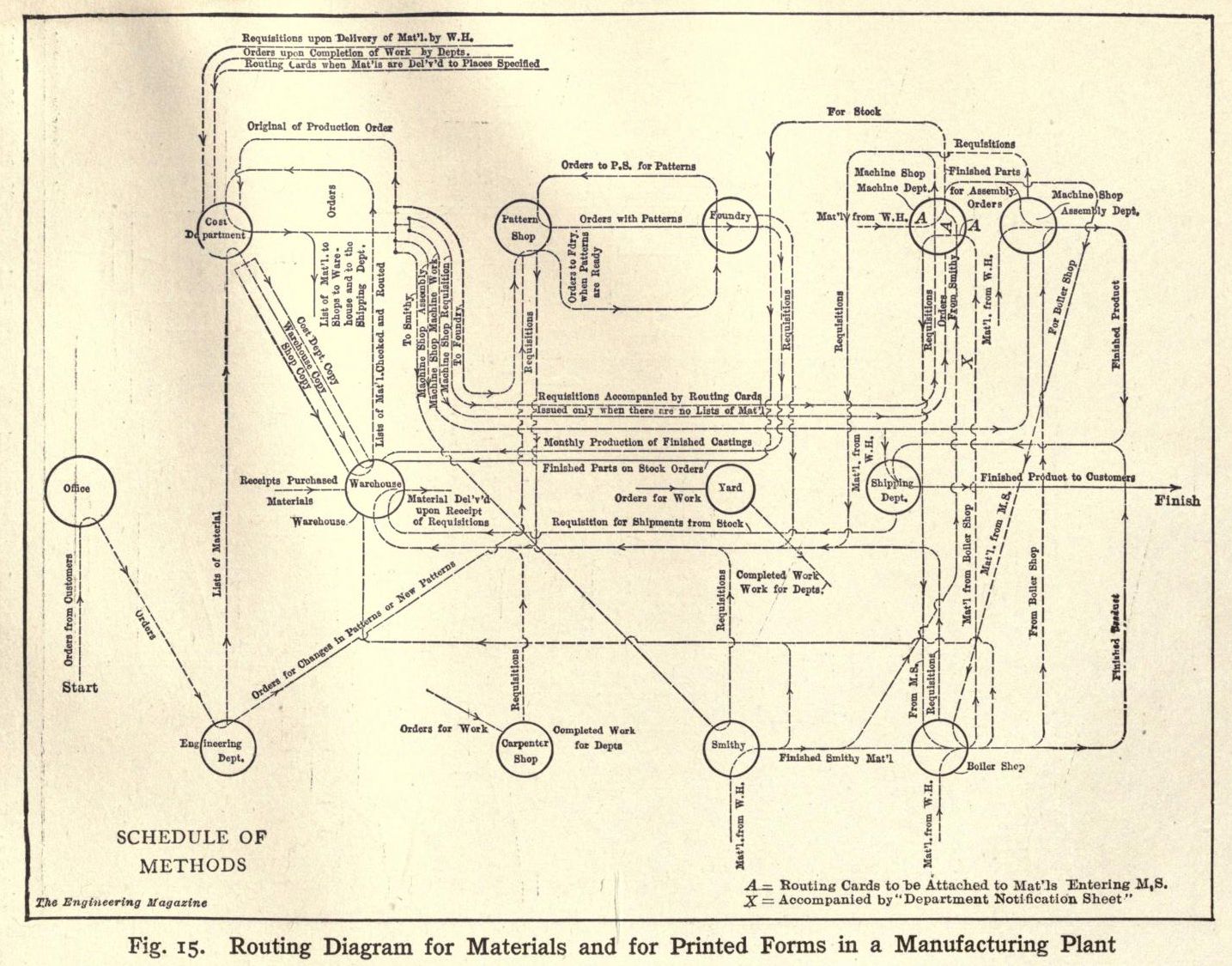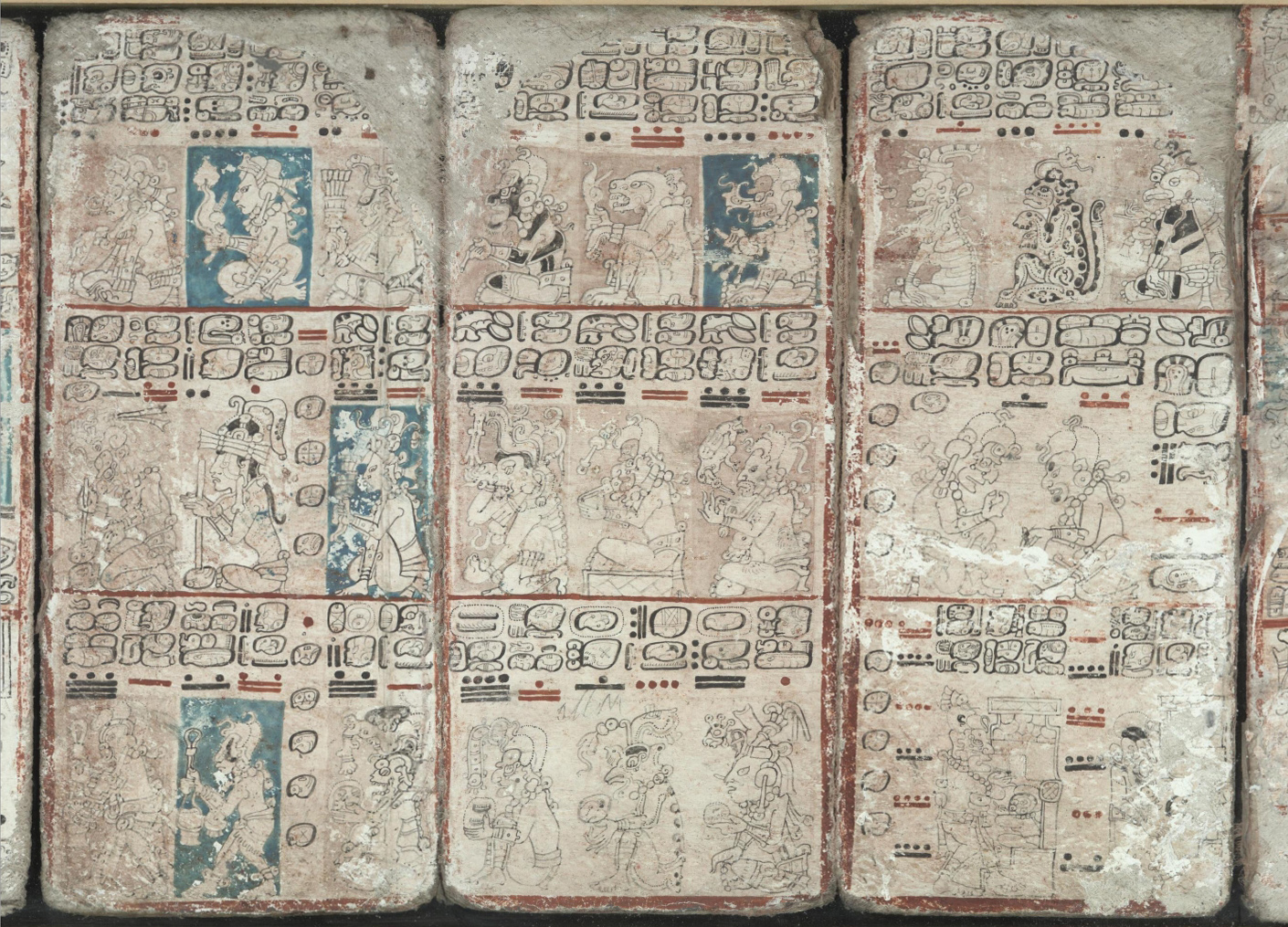
When we incorporate writing into our courses through writing to learn activities, learning to write assignments, or both, we have made the conscious decision that writing is an important tool for facilitating learning. While we may agree that incorporating writing and writing instruction into our courses is important, how often do we stop to ask ourselves what counts as writing?
How we answer this question shapes the ways we teach with writing in our classrooms; it determines the concepts, strategies, skills, and knowledge we teach when we teach writing; it defines the kinds of activities and products we assign in our courses; and it governs how we provide feedback on and evaluate student writing.
So, what counts as writing?
When Writing Doesn’t Look Like Writing
Dorothy A. Winsor in “What Counts as Writing? An Argument from Engineers’ Practice” and Patricia Dunn in ch. 3 of Talking, Sketching, Moving: Multiple Literacies in the Teaching of Writing offer us two different ways of thinking about these questions.

Winsor, in her 1992 article “What Counts as Writing?” imagines a writing studies researcher arriving at the office of an engineer in a manufacturing plant, excited to see on the engineer’s desk stacks of papers, assuming that those papers represent a lot of writing for the researcher to study. Winsor then imagines the researcher’s disappointment upon learning what those papers are: Lists of the manufactured parts rejected that week, graphs comparing the plant’s productivity over time, and shipping invoices with the received items checked off by a dock worker (337).
Winsor explains that despite the writing researcher’s assumptions, and possibly those of the engineer, these documents are writing (337). Winsor then explains that we often fail to recognize such documents as writing because our understanding of what counts as writing is often shaped by assumptions based on literary traditions, including the ideas that writing is a solitary act of individual genius, requires the “direct presence of a human being,” and is limited to verbal expression (338).
Articulating what has now become a WAC truism, Winsor argues that writing and writing activities differ from field to field, and we, both inside and outside a particular discipline such as engineering, fail to recognize disciplinary writing as writing because our assumptions about what counts as writing condition us to think of writing in specific ways (337-38). “We need to realize,” she concludes, “that our own writing is one pattern among many for creating writing and communicating knowledge” and that “different kinds of writing are specific to different kinds of fields” (346). When we fail to recognize our own disciplinary writing as writing, we run the risk of assigning essayistic genres — the research paper, the argumentative paper, the essay describing what a student knows — when it might be more appropriate to assign and teach a core disciplinary genre.
Teaching Writing through Other Ways of Knowing
While Winsor suggests, among other things, that writing need not involve words, an idea that is far more common now that when she suggested it nearly three decades ago, Patricia A. Dunn asks us to think about how we might teach writing without having students write words. In Talking, Sketching, Moving: Multiple Literacies in the Teaching of Writing, Dunn asks us to consider drawing upon multiple literacies, multiple ways of knowing and knowledge production such as sketching, speaking, moving, and metaphor, to help us teach writing. The third chapter of the book explores how sketching, speaking, moving, and metaphor can be used to generate and organize texts (65-76).

As an example, one way Dunn uses sketching to support writing in her courses is by asking students to sketch out the current structure of their essay and, based on the feedback they had received about their draft, to sketch out an alternate structure (67). Among the examples of such sketches Dunn shares are a line graph representing how interesting or boring a student believes each paragraph of his essay is; bar graphs representing the number of paragraphs per section of an essay, both as it exists and after a possible revision; diagrams comparing the current structure of an essay with a possible revision; and two sketches metaphorically representing the major problem a student was facing as they sought to revise their essays — in one case a bomber dropping bombs on the student to represent information overload and in the other case a scale representing the student’s struggles with balancing casual and academic discourse.
This Is Writing

While we might pause at both Winsor’s and Dunn’s examples of writing and writing activities, both of them base their conceptions of writing and writing activities in accepted definitions of what writing is and what writing does. Winsor calls upon Charles Bazerman’s definition of writing as “visually transmitted symbolic activity” (23, qtd. in Winsor 344), and Dunn invokes Patricia Bizzell’s discussion of writing as “a process of learning to think about one’s own thinking” (453). From the perspective of engineers’ practice, Winsor suggests, drawing upon the work of Geisler and Oulman, that “visually transmitted symbolic activity” can take four forms: verbal, in the form of written words; mathematical, in the form of numbers and equations; visual, in the form of drawings; and mechanical, in the form of physical models (342-43). Dunn, extending Bizzell, suggests that representing thinking in modes other than written verbal texts can “give people metacognitive distance on a project” in ways that help support writing to learn and problems encountered while writing (59).
Writing, Winsor and Dunn, remind us, is both product and process, both something we produce and something we do. When the purpose is to communicate visually using symbolic activity, what we produce when we have done that is writing. When we draw upon multiple literacies, multiple ways of knowing and representing knowledge, in order to produce writing, we are engaged in the act of writing.
Thinking through What Counts as Writing
Throughout the semester, we will approach this question of what counts as writing from a variety of perspectives and explore how our answers to this question shape the ways we teach with writing, what we teach when we teach writing, what we assign as writing and writing activities, and how we provide feedback for and evaluation of student writing.

Thinking through what counts as writing and how we might use this to inform what we do in our classrooms can begin by taking inventory of the forms “visually transmitted symbolic activity” take within our specific fields, both inside and outside the academy, and to list the ways of knowing and knowledge representation used in our disciplines and other disciplines with which we are familiar. Beginning with such a list, we can start to think through how we might engage those forms of writing and ways of representing our thinking through the lenses of purpose, activity, and product.
So, what might you count as writing?
Works Referenced for Further Reading
Allan, Elizabeth G., “Multimodal Rhetorics in the Disciplines: Available Means of Persuasion in an Undergraduate Architecture Studio,” Across the Disciplines 10, no. 2 (December 2013): 1-20.
Bazerman, Charles. Shaping Written Knowledge: The Genre and Activity of the Experimental Article in Science. Madison: University of Wisconsin Press, 1998.
Bizzell, Patricia. “William Perry and Liberal Education,” College English 46, no. 5 (1984): 447-454.
Dunn Patrica A. “Strategies for Using Sketching, Speaking, Movement, and Metaphor to Generate and Organize Text.” In Talking, Sketching, Moving: Multiple Literacies in the Teaching of Writing, 58-97. Portsmouth, Boynton/Cook; 2001.
Geisler, Cheryl, and Michelle Oulman. “The Role of Language in Design: A Comparison of Two WAC Courses,” CCCC Convention. Chicago, 22 March 1990.
“What Is Writing in the Disciplines?” WAC Clearinghouse, accessed January 29, 2020.
“What Is Writing to Learn?” WAC Clearinghouse, accessed January 29, 2020.
Winsor, Dorothy A. “What Counts as Writing? An Argument from Engineers’ Practice,” (1992): 337-347.
